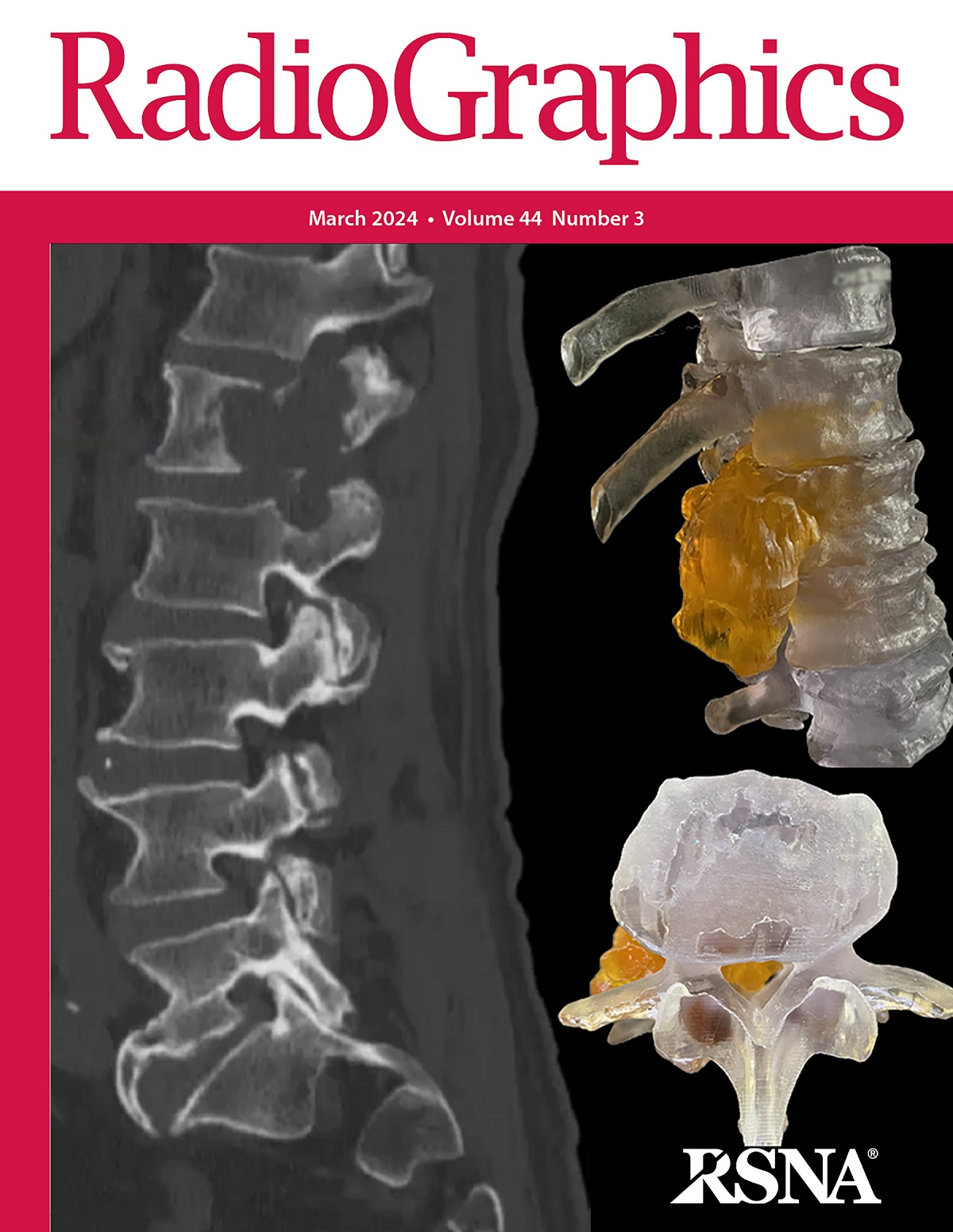Fungal Musculoskeletal Infections: Comprehensive Approach to Proper Diagnosis.
Marina C Akuri, Jenny T Bencardino, Júlia B Peixoto, Vitor N Sato, Lucas K Miyahara, Daisy T Kase, Adriana M Dell'Aquila, Adham do Amaral E Castro, Artur R C Fernandes, André Y Aihara
求助PDF
{"title":"Fungal Musculoskeletal Infections: Comprehensive Approach to Proper Diagnosis.","authors":"Marina C Akuri, Jenny T Bencardino, Júlia B Peixoto, Vitor N Sato, Lucas K Miyahara, Daisy T Kase, Adriana M Dell'Aquila, Adham do Amaral E Castro, Artur R C Fernandes, André Y Aihara","doi":"10.1148/rg.230176","DOIUrl":null,"url":null,"abstract":"<p><p>Fungal musculoskeletal infections often have subacute or indolent manifestations, making it difficult to distinguish them from other diseases and infections, given that they are relatively uncommon. Fungal infections occur by hematogenous spread, direct inoculation, or contiguous extension and may be related to different risk factors, including immunosuppression and occupational activity. The infection can manifest in isolation in the musculoskeletal system or as part of a systemic process. The fungi may be endemic to certain regions or may be found throughout the world, and this can help to narrow the diagnosis of the etiologic agent. Infections such as candidiasis, cryptococcosis, aspergillosis, and mucormycosis are often related to immunosuppression. On the other hand, histoplasmosis, paracoccidioidomycosis, coccidioidomycosis, and blastomycosis can occur in healthy patients in geographic areas where these infections are endemic. Furthermore, infections can be classified on the basis of the site of infection in the body. Some subcutaneous infections that can have osteoarticular involvement include mycetoma, sporotrichosis, and phaeohyphomycosis. Different fungi affect specific bones and joints with greater prevalence. Imaging has a critical role in the evaluation of these diseases. Imaging findings include nonspecific features such as osteomyelitis and arthritis, with bone destruction, osseous erosion, mixed lytic and sclerotic lesions, and joint space narrowing. Multifocal osteomyelitis and chronic arthritis with joint effusion and synovial thickening may also occur. Although imaging findings are often nonspecific, some fungal infections may show findings that aid in narrowing the differential diagnosis, especially when they are associated with the patient's clinical condition and history, the site of osteoarticular involvement, and the geographic location. <sup>©</sup>RSNA, 2024.</p>","PeriodicalId":54512,"journal":{"name":"Radiographics","volume":"44 7","pages":"e230176"},"PeriodicalIF":5.5000,"publicationDate":"2024-07-01","publicationTypes":"Journal Article","fieldsOfStudy":null,"isOpenAccess":false,"openAccessPdf":"","citationCount":"0","resultStr":null,"platform":"Semanticscholar","paperid":null,"PeriodicalName":"Radiographics","FirstCategoryId":"3","ListUrlMain":"https://doi.org/10.1148/rg.230176","RegionNum":1,"RegionCategory":"医学","ArticlePicture":[],"TitleCN":null,"AbstractTextCN":null,"PMCID":null,"EPubDate":"","PubModel":"","JCR":"Q1","JCRName":"RADIOLOGY, NUCLEAR MEDICINE & MEDICAL IMAGING","Score":null,"Total":0}
引用次数: 0
引用
批量引用
Abstract
Fungal musculoskeletal infections often have subacute or indolent manifestations, making it difficult to distinguish them from other diseases and infections, given that they are relatively uncommon. Fungal infections occur by hematogenous spread, direct inoculation, or contiguous extension and may be related to different risk factors, including immunosuppression and occupational activity. The infection can manifest in isolation in the musculoskeletal system or as part of a systemic process. The fungi may be endemic to certain regions or may be found throughout the world, and this can help to narrow the diagnosis of the etiologic agent. Infections such as candidiasis, cryptococcosis, aspergillosis, and mucormycosis are often related to immunosuppression. On the other hand, histoplasmosis, paracoccidioidomycosis, coccidioidomycosis, and blastomycosis can occur in healthy patients in geographic areas where these infections are endemic. Furthermore, infections can be classified on the basis of the site of infection in the body. Some subcutaneous infections that can have osteoarticular involvement include mycetoma, sporotrichosis, and phaeohyphomycosis. Different fungi affect specific bones and joints with greater prevalence. Imaging has a critical role in the evaluation of these diseases. Imaging findings include nonspecific features such as osteomyelitis and arthritis, with bone destruction, osseous erosion, mixed lytic and sclerotic lesions, and joint space narrowing. Multifocal osteomyelitis and chronic arthritis with joint effusion and synovial thickening may also occur. Although imaging findings are often nonspecific, some fungal infections may show findings that aid in narrowing the differential diagnosis, especially when they are associated with the patient's clinical condition and history, the site of osteoarticular involvement, and the geographic location. © RSNA, 2024.


